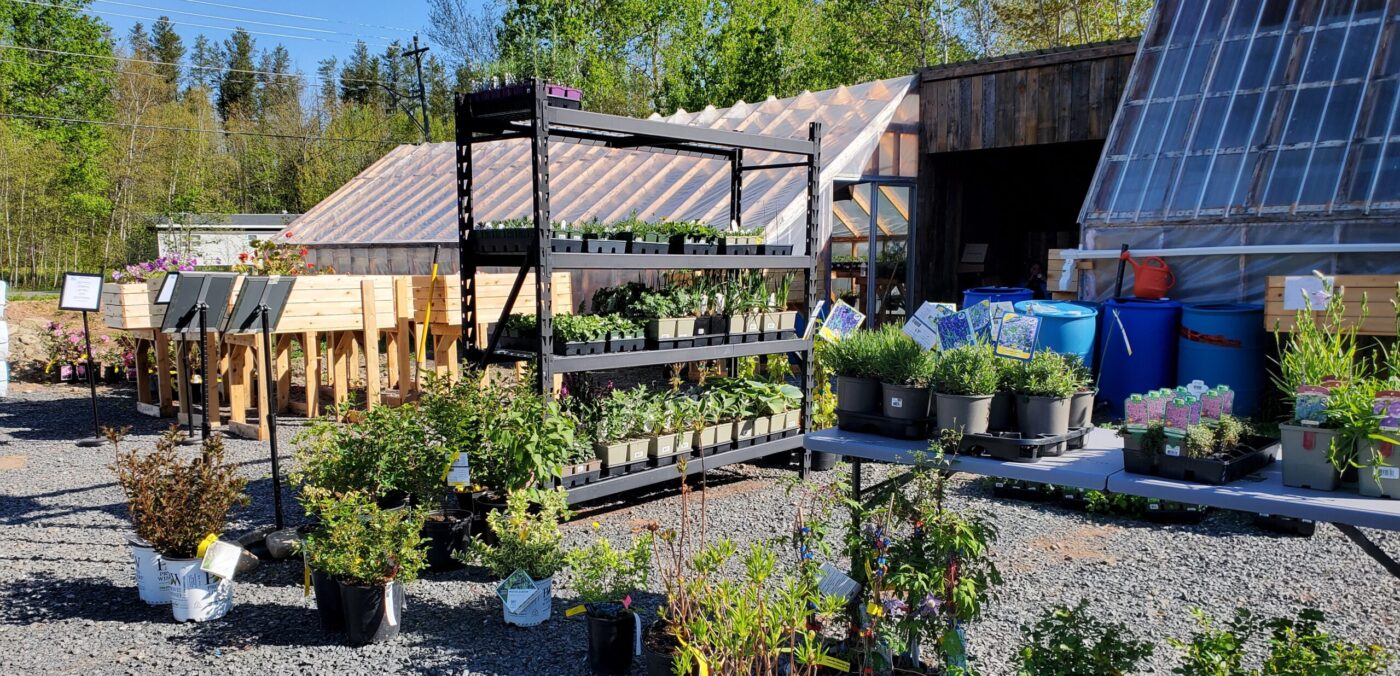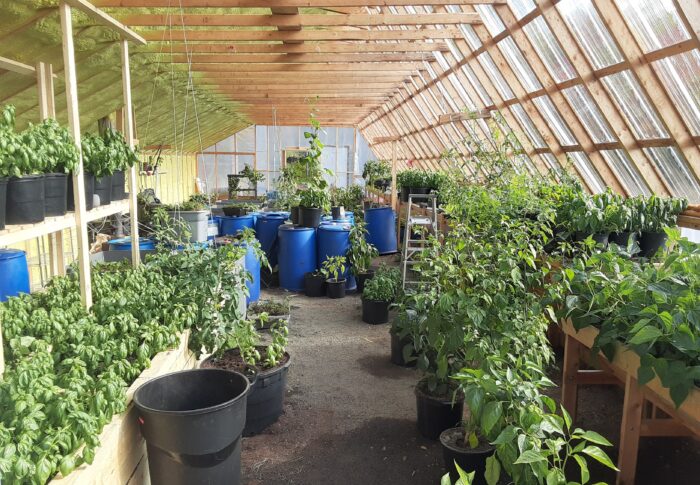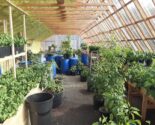
What is a Passive Solar Greenhouse?
The definition for a passive solar greenhouse is a greenhouse that doesn’t need to be heated. The key to this is to keep the heat in that is gained during the day and to keep the cold at night out.
When researching a passive solar greenhouse, you are going to find 101 ways to build them. I’ve seen some that run up to over $200,000.00 and a very small one that cost $3,000.00.
A unheated passive solar greenhouse, only works in warmer climate zones, most only run it 3 season’s out of the year.
We live in Zone 5B, our winters can dip to -40 degrees Celsius, so we heat our passive solar.
We grown in the greenhouse in all 4 seasons. What makes our greenhouse passive solar is we still take advantage of passive heating (sun) and thermal mass. We use a woodstove to heat the greenhouse when it is really cold and there is no sun. The greenhouse stays above freezing in the winter.
A well-made passive solar greenhouse will typically keep interior temperatures 10-30 degrees (Fahrenheit) warmer than the outside temperatures during the cold months.
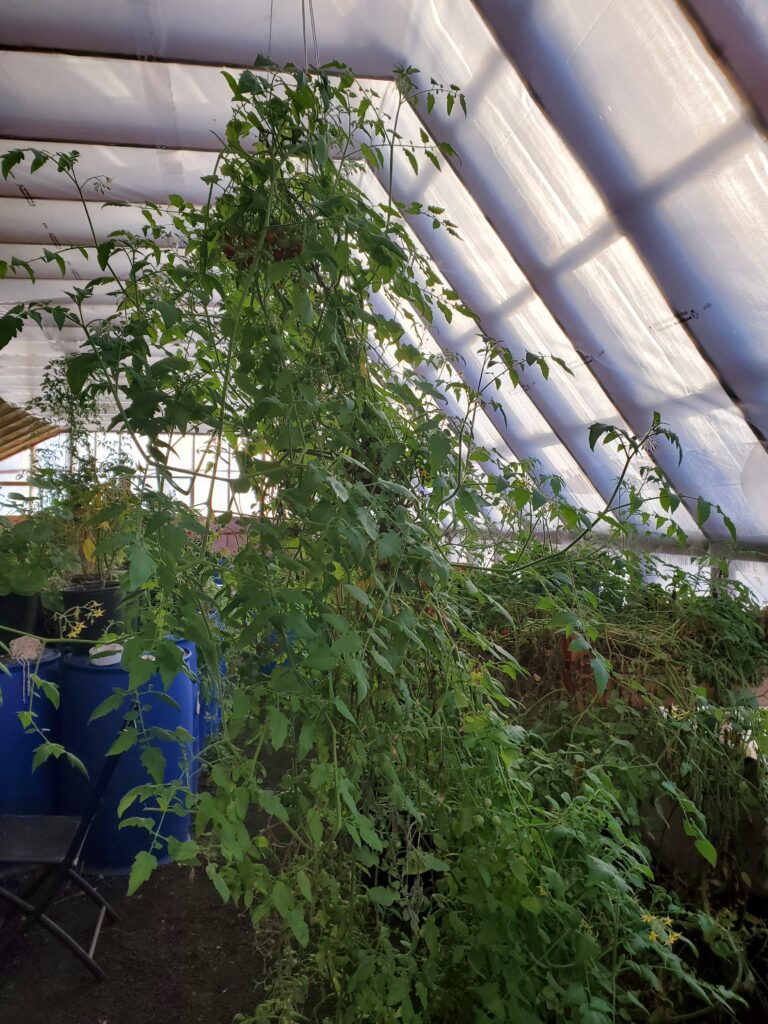
Concept
The concept of a passive solar greenhouse is having the front opening facing south. When the sun is low during the winter it reaches all the way to the back. When the sun is high in the summer it barely gets any sun so the greenhouse will stay cooler. Using a passive solar greenhouse, extends your growing season. You can start seeds and plants a lot earlier than a traditional greenhouse.
Building
Ours is 20×40 with a 16ft pitch in the back. With a 12ft facing, the back wall is 7ft high. the front is 5 ft high.
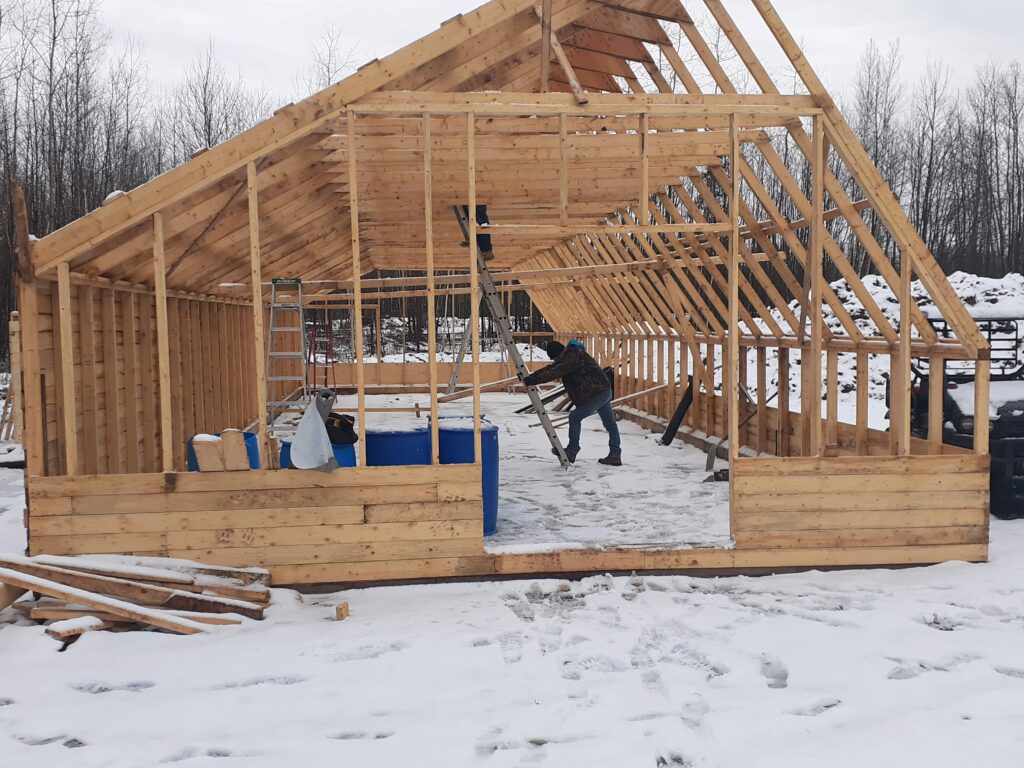
Floor
We lade down rock, gravel and crushed rock as the top layer (the rock warms up and lets off heat.) In the summer it absorbs the heat so the greenhouse stays cool. We chose the crushed gravel so we could ground when we are in there.
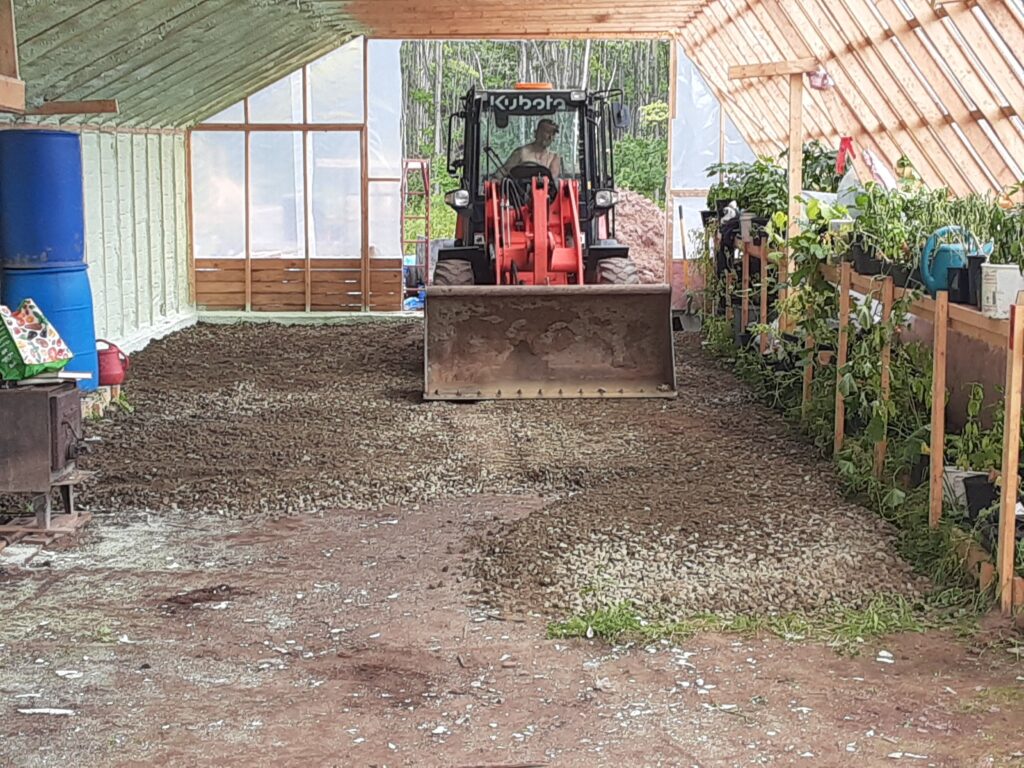
Thermal Mass
We use blue barrels painted black filled them with water, doubled up along the back wall. When the sun is out in the winter it is low in the sky, so it hits the barrels and warms them up, the barrels absorbed the heat. During the cloudy days and cold nights it lets off the heat. When we have the woodstove going the barrels are still absorbing the heat and lets it off when the greenhouse starts to cool down.
Thermal mass of various materials
| Material | Density (kg/m3) | Specific heat capacity (kJ/kg.K) | Volumetric heat capacity (kJ/m3.K) |
|---|---|---|---|
| Water | 1000 | 4.186 | 4186 |
| Concrete | 2240 | 0.920 | 2060 |
| Stone (sandstone) | 2000 | 0.900 | 1800 |
| Compressed earth blocks | 2080 | 0.837 | 1740 |
| Rammed earth | 2000 | 0.837 | 1673 |
| Fibre cement sheet (compressed) | 1700 | 0.900 | 1530 |
| Brick | 1700 | 0.920 | 1360 |
| Earth wall (adobe) | 1550 | 0.837 | 1300 |
| Autoclaved aerated concrete (AAC) | 500 | 1.100 | 550 |
Insulation
We used regular insulation and vapor barrier for the first year. In 2020 we took everything out and spray foamed 3 inches on the north facing wall. The summer of 2022 we boarded the two sides in and spray foamed them as well. We added each year depending on the winter months of us experimenting

